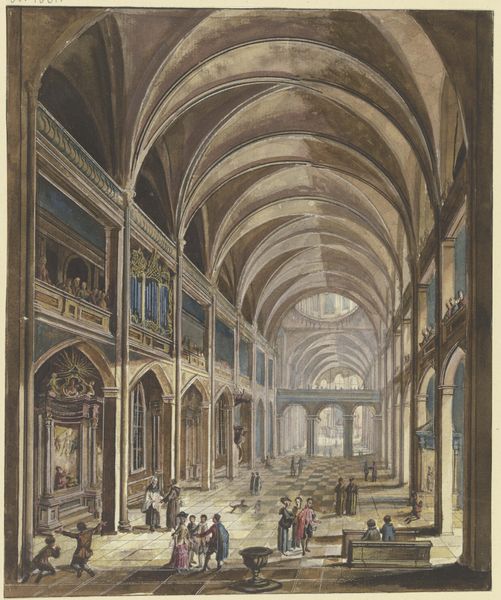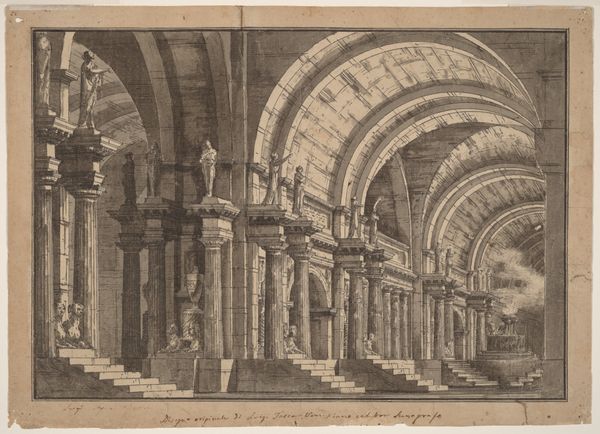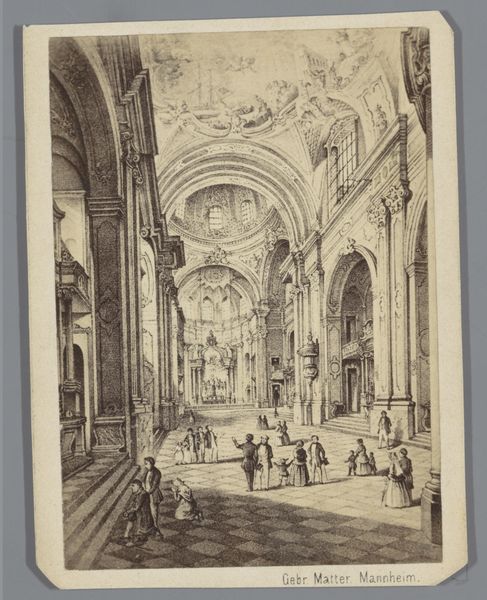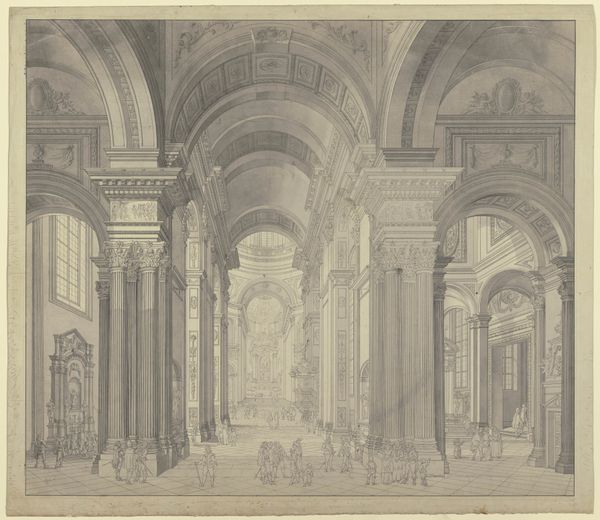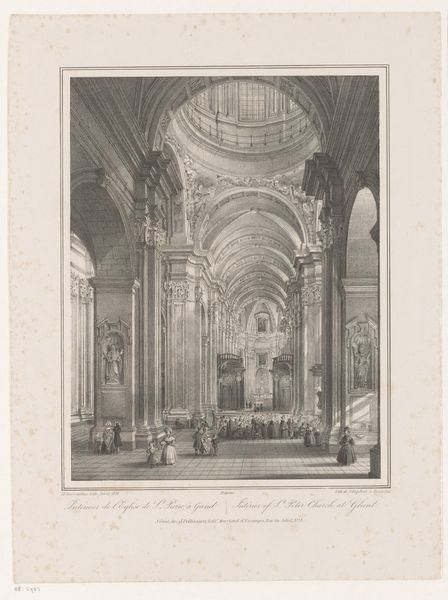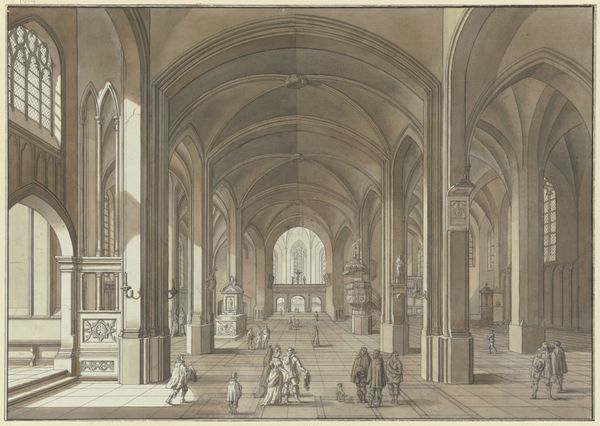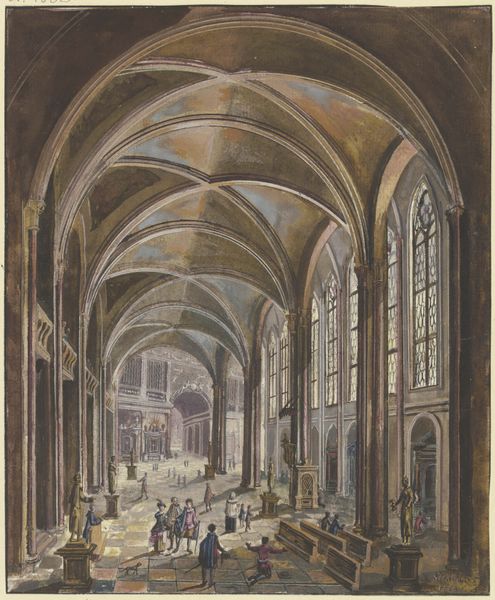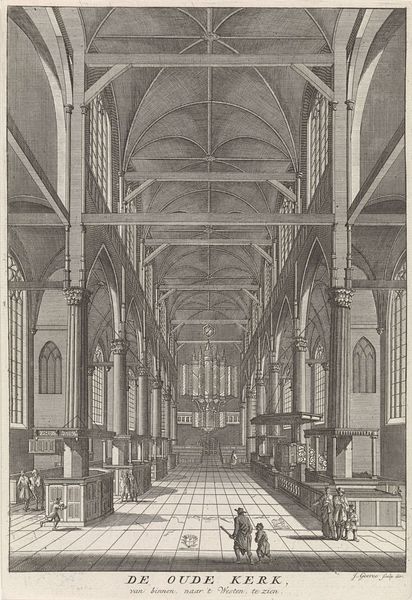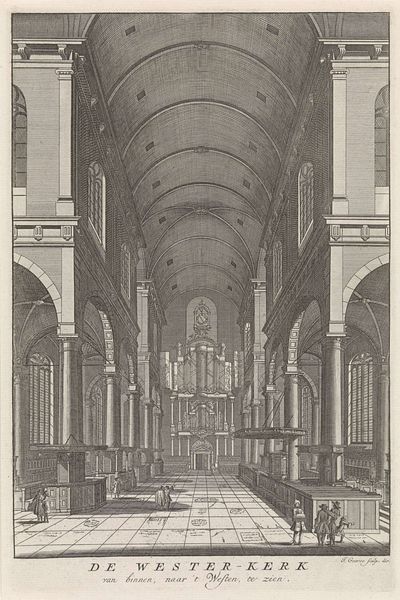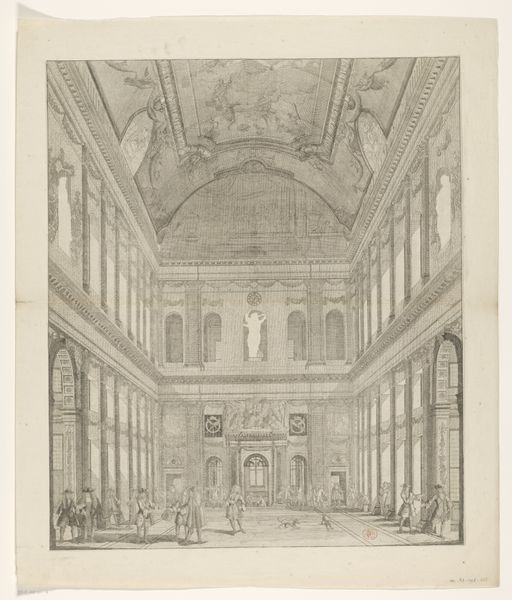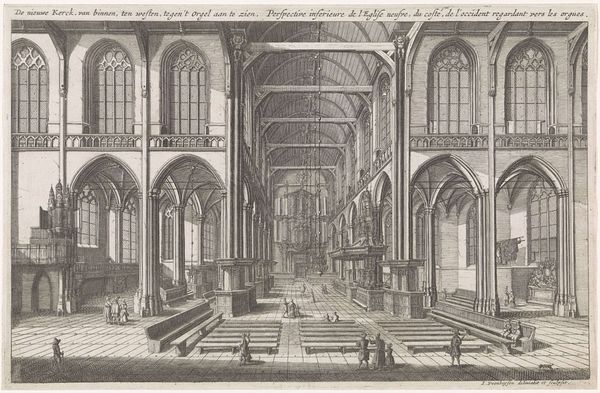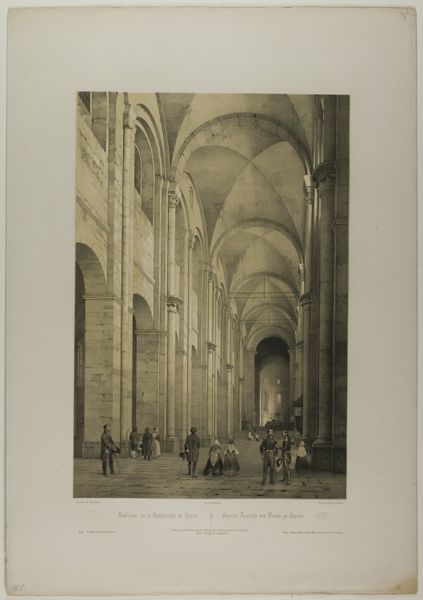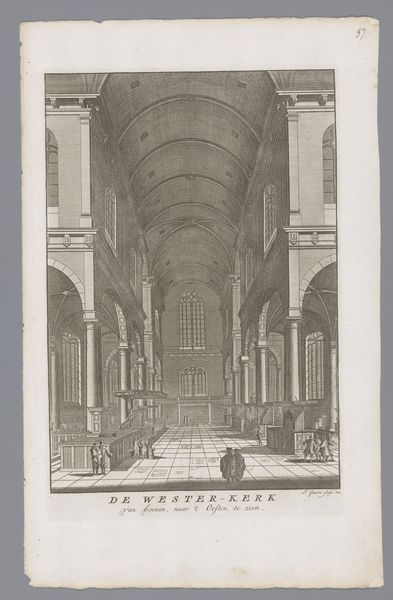
Decoration ordered by Cardinal de Retz in the Church of San Luigi, Rome, for the Saint's Feast Day 1665
0:00
0:00
drawing, print, engraving, architecture
#
drawing
#
baroque
# print
#
perspective
#
line
#
cityscape
#
history-painting
#
engraving
#
architecture
Dimensions: Sheet: 25 13/16 x 17 5/16 in. (65.5 x 44 cm)
Copyright: Public Domain
Curator: Let's consider this elaborate engraving, "Decoration ordered by Cardinal de Retz in the Church of San Luigi, Rome, for the Saint's Feast Day," dating back to 1665 by Dominique Barrière. What strikes you first about this depiction? Editor: The sheer, overwhelming grandiosity. It’s meant to impress, isn’t it? Almost propagandistic, with that relentless perspective guiding the eye upward, diminishing the individual. Who was this cardinal trying to impress? Curator: Well, beyond the visual spectacle, consider the symbolism. Baroque art often used illusion and ornamentation to inspire awe and reinforce the power of the Church. Notice the intricate patterns, the ordered rows—visual emblems of authority. The depicted temporary structures created for the feast are, in effect, metaphors for transient earthly power reflecting the eternal authority of the Church. Editor: Yes, but what is that power truly rooted in? Here we have the image of a religious event staged in a period marked by stark socio-economic disparities, the Church complicit, more concerned with displays than the basic needs of the marginalized. Doesn't this visual emphasis on ritual divert attention from more fundamental societal inequities? Curator: I concede that your socio-political analysis is relevant. And yet, consider the persistence of these visual symbols. Even now, we instinctively understand them, regardless of belief or critique. Think about that powerful endurance of cultural imagery! Editor: But endurance doesn't necessarily equate to validity or virtue. We need to look critically at whose stories are being visually prioritized, amplified, and perpetuated through such artworks, particularly those linked to powerful and often exploitative institutions. Who are these finely dressed people and how did they earn their place in this gilded hall? Curator: That’s an important layer to consider. Ultimately, viewing "Decoration ordered by Cardinal de Retz…" demands a duality, acknowledging the symbolic messaging while simultaneously challenging its implied authority. Editor: Indeed. Engaging with it means being critically aware of how such representations functioned and continue to function within historical power dynamics and the legacies they create.
Comments
No comments
Be the first to comment and join the conversation on the ultimate creative platform.
